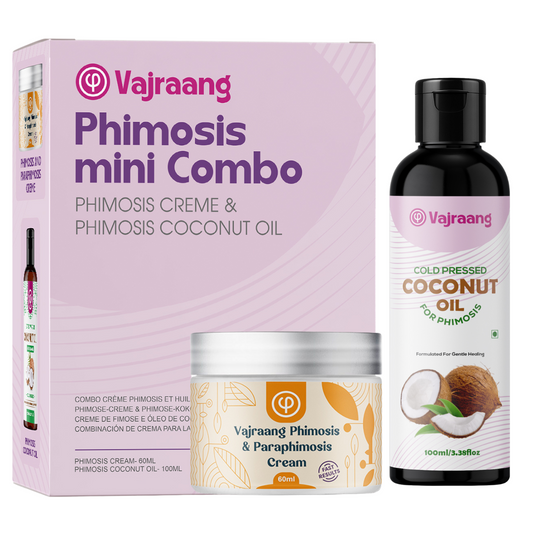When addressing phimosis through stretching exercises, one question looms large: “How long will it take?” While timelines vary by individual, progress is achievable with consistent effort and the right approach. Let’s break down the process, set realistic expectations, and explore how you can make the most of your treatment.
The Typical Timeline for Phimosis Stretching

Stretching exercises work by gently expanding the phimotic band, allowing the foreskin to become more elastic over time. Here’s a general timeline of what to expect:
1. 2–4 Weeks: Initial Progress
• Mild cases may show improvements, such as partial retraction when flaccid.
• Increased comfort during stretching sessions is often noticeable.
• For more details, check out “How to Use Vajraang Phimosis Stretching Rings for Treating Phimosis at Home”.
2. 4–12 Weeks: Moderate Progress
• Moderate phimosis cases may take a few months to achieve significant flexibility.
• Foreskin retraction over the glans (when flaccid) becomes smoother and less restrictive.
3. 3–4 Months: Significant Milestones
• Severe cases, such as pinhole phimosis, require consistent stretching to achieve full retraction when flaccid.
• Progress toward retraction during an erection begins to emerge.
• Learn how to avoid complications by reading “Preventing Paraphimosis and Tears During Phimosis Treatment or Sexual Activity”.
4. Beyond 4 Months: Maintenance and Refinement
• For most, phimosis resolves within four months. Ongoing gentle stretching helps maintain results and prevent recurrence.
Factors That Influence Progress

Several factors determine how quickly you’ll see results:
• Severity of Phimosis:
Mild cases respond faster than severe pinhole phimosis.
• To understand more about different severity levels, visit “Phimosis Treatment Timeline: What to Expect Week by Week”.
• Consistency:
Daily stretching is critical; skipping sessions can slow progress.
• Technique:
Using tools like the Vajraang Phimosis Stretching Rings or Vajraang GlanPro Tool ensures effective and safe stretching.
• Lubrication:
Applying Vajraang Extra Virgin Coconut Oil reduces friction and enhances comfort during stretching.
• Skin Elasticity:
Younger individuals or those with naturally elastic skin often see faster results.
Recognizing Progress
Progress may feel slow, but even small improvements matter. Look for these signs:
• Looser Stretching: Rings or tools feel less tight.
• Improved Retraction: The foreskin retracts farther with less effort.
• Decreased Discomfort: Stretching becomes more comfortable over time.
Tips to Maximize Results
1. Be Gentle: Avoid forcing the foreskin; overstretching can lead to microtears. Learn more in “Do This If You Experience Pain During Stretching”.
2. Incorporate Warm Baths: Warm water helps relax tissue, making stretching more effective.
3. Stay Consistent: Daily stretching ensures steady progress.
4. Use Supportive Products: Pair stretching with Vajraang Phimosis & Paraphimosis Cream to soften the phimotic band and accelerate results.
When to Seek Medical Advice
If you notice no improvement after 3–4 months of consistent stretching or experience pain, consult a doctor. For cases with a tight frenulum, consider frenuloplasty or other medical interventions. To understand the frenulum’s role better, visit “The Importance of the Frenulum in Phimosis: Should It Be Stretched Too?”.
Final Thoughts
Stretching exercises for phimosis are a reliable, non-invasive solution that yields excellent results with patience and persistence. Whether you’re seeing early progress or tackling a severe case, staying consistent is the key. Celebrate every milestone, no matter how small, because each step brings you closer to overcoming phimosis and enjoying improved comfort and confidence.
Your foreskin’s flexibility is a journey—take it one gentle stretch at a time!






